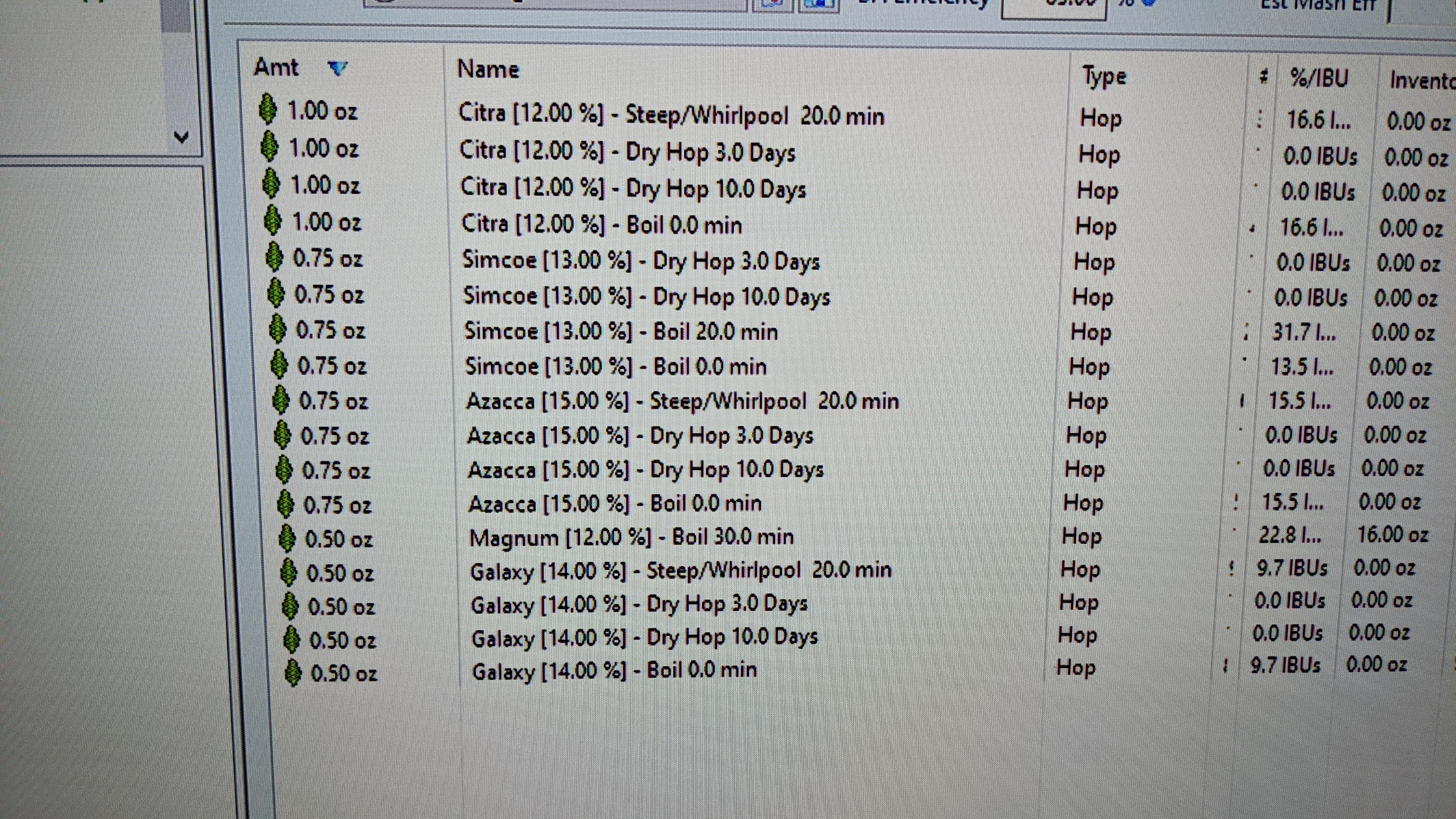InspectorJon
Well-Known Member
Let's see if there is really a significant interest interest in pursuing this as a serious subject or just a lot of folks that want to rant. I'll start by saying I really like the better examples of "NEIPA" and understand haze as a reault of process and not as a goal. I also like the idea of calling it New England Ale and not IPA but I think that ship has sailed. I have seen some IPA's recently at local breweries that were classified as West Coast IPA that were not opaque like many of the NEIPAs on the market but they were not really clear either. We have all heard or read the debate on hazy vs. clear IPA. There is a 40 page thread on that. Let's not debate it here.
Rather than discussing or debating the subject of hazy vs. clear I would like this discussion to be about actual how to and methods of creating a really flavorful clear IPA. Not simply a high IBU IPA which seemed to be a goal a while back but a truly flavorful one. A discussion about grain bill and hop schedules that will combine to focus on both clarity and flavor. Pictures of clear IPA are nice but lets talk about how you got there.
What can be done to make a truly clear IPA that has well defined, standout modern hop flavor and aroma? Is it possible? Personally I care more about flavor than aroma but as one that loves to cook I know smell and taste are closely intertwined. In this article Scott Janish digs into this idea of what creates and what might mitigate haze. Highly flocculant yeast is likely necessary to make clear beer but won't eliminate haze. Haze in good NEIPA is not a resut of yeast in suspension. Polyphenols from hops and protein from malt combining to remain in suspension seem to be prime suspects for haze. Can we minimize polyphenols and protein and still get big hop flavor? I am still what I think of as an intermediate beginning brewer so I am clearly not an expert in the subject matter at hand but it is something I'd like to know more about and pursue.
This is an almost? clear West Coast IPA with Citra, Amarillo and Sabro hops. I thought it was pretty good.

Rather than discussing or debating the subject of hazy vs. clear I would like this discussion to be about actual how to and methods of creating a really flavorful clear IPA. Not simply a high IBU IPA which seemed to be a goal a while back but a truly flavorful one. A discussion about grain bill and hop schedules that will combine to focus on both clarity and flavor. Pictures of clear IPA are nice but lets talk about how you got there.
What can be done to make a truly clear IPA that has well defined, standout modern hop flavor and aroma? Is it possible? Personally I care more about flavor than aroma but as one that loves to cook I know smell and taste are closely intertwined. In this article Scott Janish digs into this idea of what creates and what might mitigate haze. Highly flocculant yeast is likely necessary to make clear beer but won't eliminate haze. Haze in good NEIPA is not a resut of yeast in suspension. Polyphenols from hops and protein from malt combining to remain in suspension seem to be prime suspects for haze. Can we minimize polyphenols and protein and still get big hop flavor? I am still what I think of as an intermediate beginning brewer so I am clearly not an expert in the subject matter at hand but it is something I'd like to know more about and pursue.
This is an almost? clear West Coast IPA with Citra, Amarillo and Sabro hops. I thought it was pretty good.

Last edited:












































![Craft A Brew - Safale BE-256 Yeast - Fermentis - Belgian Ale Dry Yeast - For Belgian & Strong Ales - Ingredients for Home Brewing - Beer Making Supplies - [3 Pack]](https://m.media-amazon.com/images/I/51bcKEwQmWL._SL500_.jpg)


















